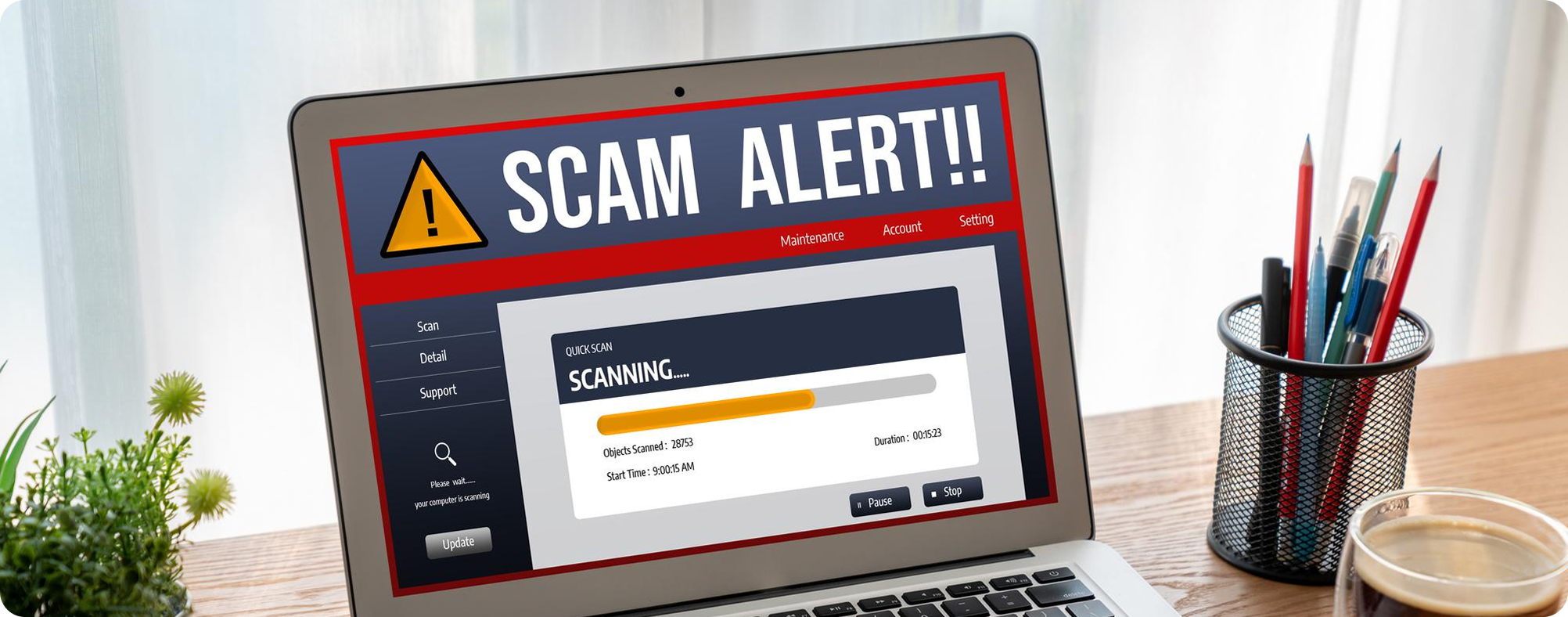Why Tracking Scammers Is Difficult (But Not Impossible)
Modern fraud rings are built to vanish. They cycle fake identities and burner SIMs, talk on encrypted apps, hop money through crypto mixers, cross-chain bridges, and money-mule accounts, and rent bulletproof hosting that rotates domains as fast as takedowns land. Europol’s latest IOCTA notes that online payment fraud and crypto-enabled laundering now blend traditional mules with on-chain obfuscation so a single victim payment can splinter across services, countries, and currencies within minutes.
Still, “invisible” doesn’t mean untraceable. With the right artefacts preserved early, investigators can often map the network, freeze assets, and link repeat infrastructure across cases.
Why they’re hard to follow
- Disposable identity & comms: Fresh accounts, spoofed caller-IDs, and disappearing-message chats reduce audit trails. U.S. Secret Service flags relationship-build + fake investment playbooks that migrate victims to off-platform chats.
- Rapid money movement: Funds jump from bank rails to stablecoins, then through mixers, bridges, OTC desks and back to exchanges — fragmenting flows and frustrating simple “follow the money” attempts. (Observed by Chainalysis & Europol.)
- Industrialised infrastructure: Phishing kits, cloned sites, and “guarantee” escrow look-alikes recycle logos, JS trackers, and CDN hosts; easily rebranded after takedown. TRM Labs finds >75% of sampled pig-butchering addresses show sophisticated on-chain laundering, suggesting coordinated, reusable pipelines.
- Jurisdiction & speed: Money and servers cross borders faster than mutual legal assistance can; evidence disappears unless preservation requests and rapid cross‑jurisdiction action occur quickly.
…but not impossible: how tracing actually works
- On-chain forensics: Even when criminals chain-hop or use mixers, blockchain analytics can cluster addresses, track flows to KYC’d chokepoints (exchanges, payment processors), and surface co-movement with known scam wallets. Recent coordinated actions show that large freezes are achievable when investigators and platforms act in concert.
- Web2 breadcrumbs: Reused Google Analytics/Meta Pixel IDs, TLS certificate transparency logs, passive DNS, name-server histories, and CDN buckets tie “new” scam sites to older campaigns.
- Account & device signals: Recycled phone numbers/emails, IMEI/advertising IDs, IP/ASN patterns, time-zone artefacts, EXIF remnants in images, and tracking parameters in shortened links build linkage across personas.
- OSINT pivots: Reverse-image and handle searches often reveal the same photos/aliases across platforms, forums, or prior victims’ reports.
- Financial-intel joins: Bank recall attempts, mule-account patterning, and SAR narratives (where available) connect seemingly isolated payments back to shared coordinators.
- Victim-side artifacts: Full chat exports, headers, URLs, and payment receipts provide the keys to many of the pivots above.
What to capture immediately (copy/paste checklist)
- People & profiles: Marketplace/profile URLs, usernames/IDs, phone numbers, email addresses, and any referral codes.
- Conversations: Screenshots and raw text export of chats (keep timestamps).
- Links & sites: Full URLs (no truncation), redirects, short-link IDs, landing pages, and any login prompts.
- Payments: Bank receipt/PayID/Zelle/PayPal transaction IDs; crypto addresses + TX hashes + network.
- Technical: Email/SMS headers, sender domains, IPs if shown, certificate details (padlock → certificate), hosting/CDN if visible.
- Timing: Exact dates/times (with timezone) when messages, payments, and logins occurred.

The faster you preserve this data, the more likely investigators are to pivot (e.g., from a wallet to an exchange account, or from a tracking ID to a cluster of look-alike domains) before evidence rotates out.
What “success” looks like
- Asset freezes at exchanges/issuers: On-chain tracing links flows to KYC endpoints (e.g., industry–LE partnerships reported hundreds of millions frozen across romance/pig-butchering networks). Freezing isn’t the same as restitution but it buys time to pursue recovery through legal channels.
- Infrastructure takedown: Seizure of domains/servers; blocking fake apps and merchant accounts; removal of coordinated inauthentic profiles.
- Attribution & disruption: Linking wallets, phones, and domains across cases to target the operators, not just the aliases.
Reality check (so you plan smart)
- Authorised push payments: You hit “Send,” making these harder to claw back than card fraud chargebacks.
- Move immediately: Bank recalls, dispute filings, law-enforcement reports, and preservation requests for platform data. (IC3/FTC data shows rising losses because transfers are increasingly “authorised.”)
Step-by-Step: How to Track Down a Scammer
1. Gather Key Evidence Immediately
Start with a detailed record:
- Screenshots of all messages, emails, and chats
- Records of transactions (banks, crypto wallets, payment apps)
- Phone numbers, email addresses, usernames
- Links to websites or profiles
2. Don’t Go It Alone, Bring in Experts
Tracking scammers solo is tough. Fraud investigators use:
- Blockchain traceability to follow stolen crypto funds
- Forensic profiles on messaging and hosting infrastructure
- Structured case reports to support law enforcement efforts
3. Use Online Tools to Validate Identity
Several legitimate services can help narrow down identities, though with limits:
- Reverse-lookup platforms like Spokeo or TruthFinder for phone and email tracing
- Reverse image searches (Google Lens, Lenso.ai) to detect reused photos
Be cautious, some “people finder” services are scams themselves. Avoid poorly-reviewed or vague platforms.
4. Follow the Money Trail
Whether through bank transfers or cryptocurrency, tracing financial flows is key:
- Use blockchain analytics to trace destination wallets and potential mixers
- For traditional payments, contact your bank and work with the authorities on tracing
5. Report to Authorities and Platforms
Take action across multiple fronts:
- Report to the police or cybercrime unit (ASIC/Scamwatch in AU, FTC/IC3 in US)
- Report the user or listing on the platform used (Facebook, marketplace, email provider)
6. Resist Vigilante Tracking
Attempting to track scammers yourself (gunju actions, personal confrontations) is risky and not advised. You may end up exposing yourself to danger or legal repercussions.
6. Resist Vigilante Tracking
Governments now have specialized investigative cyber units trained to follow scams across borders, digital forensics, IP tracing, and collaboration with international agencies all come into play here.
8. Consider Scam Baiting with Caution
Some individuals engage in “scambaiting,” where they pretend to be victims to waste scammers’ time and collect intel. Famous figures like Jim Browning have used this to expose scam call-centres, often partnering with police. Warning: Engaging in scambaiting carries risks and should be done carefully or avoided unless you’re experienced.
Real Story from Australia
Jo O’Brien lost $500,000 to a fake investment website impersonating real brands. Despite confronting the alleged scammer and contacting authorities, the money remained unrecovered, highlighting the limitations of tracking alone and the need for expert help.
How CypherGuard Helps Track Scammers
- Rapid Forensic Reports: From transaction analytics to metadata gathering
- Global Reach: Connecting with cybercrime units and exchanges for faster disruption
- Safe Case Preparation: Gathering admissible evidence for court or financial recovery
- Scam Pattern Mapping: Linking one case to broader scam networks for prevention
Tracking down a scammer is challenging, but not impossible. With the right documentation, expert help, and legal backing, recovery and justice can be within reach. If you’ve been scammed, act fast and enlist help.
CypherGuard is here to support you with forensics, protection, and recovery. Don’t wait, reach out now.
FAQ
Q: Can a scammer be tracked down through email or phone number?
A: Sometimes, especially if the info is valid and not anonymised. But many scammers use burner accounts or VoIP-based spoofing to avoid tracking.
Q: Is tracking scammers myself safe?
A: DIY tracking can be dangerous and may expose you to more threats. It’s best left to professionals.
Q: How long does it take to track a scammer?
A: That depends on the case complexity, digital trail, and whether law enforcement is involved. With rapid response, CypherGuard can often produce useful intelligence in hours.
CypherGuard is here to support you with forensics, protection, and recovery. Don’t wait, reach out now.




